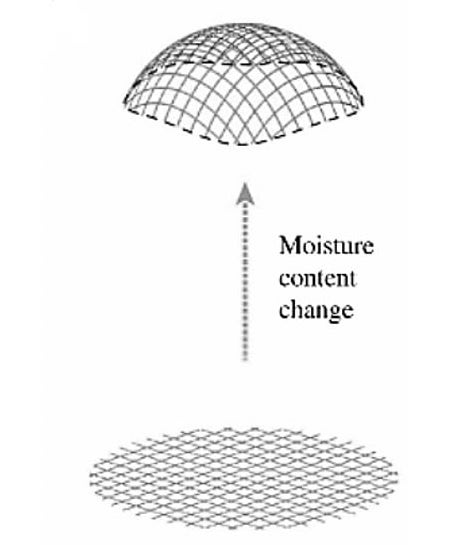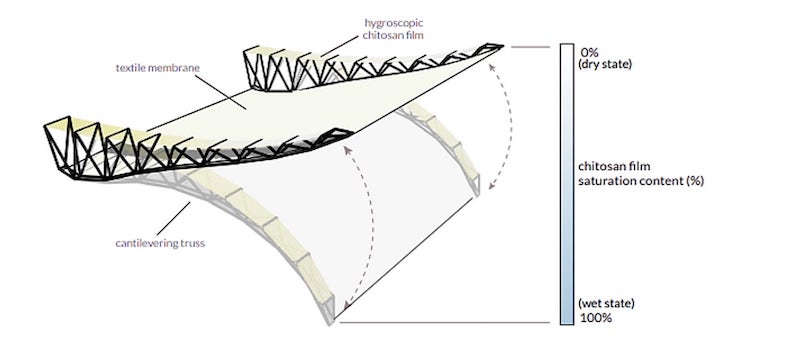Author: Md. Khalilur Rahman Khan / [email protected]
1. Introduction to BioComposite
Thanks to the continual development in ecological consciousness, the replacement of synthetic fiber with the utilization of reinforced natural fiber has attracted more significant consideration in the manufacturing industries with composite materials [1].
As a result, biocomposites have led to significant advancements in green materials in this century [2]. Biocomposite materials are composite materials that contain at least one component obtained from natural resources [3]. Therefore, natural fiber reinforced composites are biocomposites.
They are biodegradable, recyclable, non-abrasive, and compostable, with qualities that are comparable to synthetic fiber composites [2]. It has the potential to be the next-generation material for all structural applications in a variety of industries, including the automobile and infrastructure industries, as well as customer applications [1].
Despite the fact that natural fibers offer a new generation of reinforcements for polymer matrices, natural fiber-composites have a number of drawbacks, including poor interfacial bonding and the display of natural fibers’ hydrophilic properties.
Natural fibers are hydrophilic due to their abundance of hydroxyl groups, which results in poor bonding with polymer matrices [4]. In fact, one of the constraints of natural fibre-reinforced composite (NFRC) applications has long been regarded to be the moisture adsorption of natural fiber [5]. However, this limitation of NFRC is now being studied as a positive characteristic for some application areas.
2. Hygromorphing
Hygromorphing (shown in figure-1) is a phenomenon occurred when structural materials respond to the relative humidity of the environment by changing their dimensions, and hence their shape by swelling through the uptake of water [6]. Sensor/actuator systems based on hygrosensitive materials may directly transform primary energy, such as solar radiation or hydropower, into a technically useful kinetic energy, which is energetically advantageous. Aside from energy conservation, the use of renewable resources in material innovation is equally significant [7].

Plants have evolved a variety of movements to catch prey, spread seeds, and defend themselves in the wild. Many of these motions take place without the use of external energy [6]. A considerable number of plants adjust to environmental stimuli, such as changing relative humidity in the surroundings or sun radiation, by passive or active motions [7]. Pine cones are one of the most well-known and explored natural hygromorphs (shown in figure-2).
The bilayered structure is responsible for the opening and closing of the ovuliferous scales [6]. Sclerenchyma and sclereids form a hierarchical bilayer microstructure in which their principle is based [9]. From the sclereid cells at the bottom of the scale to an area of sclerenchymatous strands at the top, each scale develops a functioning bilayer structure through a gradation in its tissue structure.
The actuating (active) layer is the sclereid layer, while the resistive (passive) layer is the sclerenchymatous layer. Both layers mandate an upward scale bending in response to water uptake and differential swelling (wet environment, cone closes) and a downward scale bending in response to desiccation (dry environment, cone opens) [10]. Hygroscopic cellulose-based material systems are an raw material basis for humidity-responsive actuators [7].
Cellulose micro fibrils swell perpendicular to their orientation inside the material due to hygroscopic water uptake from the surrounding environment, causing a passive shape change whose amount and direction is programmed in the microstructure [6]. Interestingly, in terms of energy conservation in technical applications, this bioinspired adaptive mechanism represents an alternative and sustainable strategy [7].

4. Bioinspired Hygromorph BioComposites (HBCs)
Hygromorph biocomposites (HBCs), which have been classified as a novel type of smart material, are hygroscopically active materials with moprhing ability in response to moisture changes. They were just recently produced with the ability to self-shape or generate force [12]. When plant fibres are utilized in asymmetric (bilayer-like) laminates, their anisotropic swelling causes hygroscopic tensions to occur, resulting in the production of a curvature. Plant fibres, rather of serving as a simple polymer reinforcing material, serve as hygroscopically active building blocks in this situation [13].
When a moisture gradient is present, hygromorph biocomposite (HBC) actuators employ plant fibers’ transport characteristics to generate an out-of-plane displacement [13]. They can be produced using asymmetrical lay-up [0°, 90°]ns stacking sequences [14].
Indeed an active (high swelling) and a passive layer (low swelling) tightly coupled together show different swelling behaviors due to a specialized fiber nanostructure (shown in figure-3). This structure undergoes differential swelling strains when moistened, which result in bending actuation [12].
When a large degree of bending is required, such bilayers are typically built as cross-ply structures, which maximize the amount of differential strain. Controlling actuation kinetics with the same material but a different architecture provides the path for HBCs design for multi-step shape-shifting and sophisticated morphing materials [15].

Actuation strain and stress of the HBCs were competitive with synthetic actuators, with folding ability similar to shape memory alloys and piezoelectric polymers, implying that plant fiber might be used as a swelling agent [12]. Swelling of natural fibers and their laminates is a critical aspect in the development of high-performance biocomposite actuators [14].
HBCs based on thermoplastic polymers are particularly promising for general manufacturing because of their flexibility to complicated shape building by thermos compression and/or 3D/4D printing [14]. 4D printing permits fine-tuning their material architecture and hence their responsiveness and reactivity.
Utilizing advantages of the inherent hygroscopic and anisotropic features of natural fiber and the multi-material and customizable microstructure with 3D printing technologies, high-performance NFRCs with programmable moisture-actuated functionality can be obtained [5].


HBCs are also cost-effective, and eco-friendly. The development and usage of hygromorph biocomposites may also open up new markets for natural fiber providers, allowing them to diversify their revenue streams away from the traditional textile sector [13].
References
1. S. Om Prakash, Parul Sahu, Mohankumar Madhan, A. Johnson Santhosh, “A Review on Natural Fibre-Reinforced Biopolymer Composites: Properties and Applications”, International Journal of Polymer Science, vol. 2022, Article ID 7820731, 15 pages, 2022. https://doi.org/10.1155/2022/7820731
2. Akter, M., Uddin, M. H., & Tania, I. S. (2022). Biocomposites based on natural fibers and polymers: A review on properties and potential applications. Journal of Reinforced Plastics and Composites. https://doi.org/10.1177/07316844211070609
3. Ngo, Tri-Dung. “Natural Fibers for Sustainable Bio-Composites” In Natural and Artificial Fiber-Reinforced Composites as Renewable Sources, edited by Ezgi Günay. London: IntechOpen, 2017. 10.5772/intechopen.71012
4. Asyraf, M.R.M.; Syamsir, A.; Zahari, N.M.; Supian, A.B.M.; Ishak, M.R.; Sapuan, S.M.; Sharma, S.; Rashedi, A.; Razman, M.R.; Zakaria, S.Z.S.; Ilyas, R.A.; Rashid, M.Z.A. Product Development of Natural Fibre-Composites for Various Applications: Design for Sustainability. Polymers 2022, 14, 920. https://doi.org/10.3390/polym14050920
5. Mi Li, Yunqiao Pu, Valerie M. Thomas, Chang Geun Yoo, Soydan Ozcan, Yulin Deng, Kim Nelson, Arthur J. Ragauskas,Recent advancements of plant-based natural fiber–reinforced composites and their applications,Composites Part B: Engineering,Vol. 200,2020,108254,https://doi.org/10.1016/j.compositesb.2020.108254.
6. Scholz, R., Langhansl, M., Hemmerich, M. et al. Impact of solar radiation on chemical structure and micromechanical properties of cellulose-based humidity-sensing material Cottonid. Functional Composite Mater 2, 9 (2021). https://doi.org/10.1186/s42252-021-00022-4
7. Scholz, Ronja & Langhansl, Matthias & Zollfrank, Cordt & Walther, Frank. (2020). Humidity-Sensing Material Cottonid – Microstructural Tuning for Improved Actuation and Fatigue Performance. Frontiers in Materials. 7. 156. 10.3389/fmats.2020.00156.
8. Grönquist, Philippe & Panchadcharam, Prijanthy & Wood, Dylan & Menges, Achim & Rüggeberg, Markus & Wittel, Falk. (2020). Computational analysis of hygromorphic self-shaping wood gridshell structures. Royal Society Open Science. 7. 192210. 10.1098/rsos.192210.
9. Antoine Le Duigou, David Correa, Masahito Ueda, Ryosuke Matsuzaki, Mickael Castro,A review of 3D and 4D printing of natural fibre biocomposites,Materials & Design,Volume 194,2020,108911,https://doi.org/10.1016/j.matdes.2020.108911.
10. Correa D, Poppinga S, Mylo MD, Westermeier AS, Bruchmann B, Menges A, Speck T. 2020 4D pine scale: biomimetic 4D printed autonomous scale and flap structures capable of multi-phase movement.Phil. Trans. R. Soc. A 378: 20190445. http://dx.doi.org/10.1098/rsta.2019.0445
11. Tamay, Dilara & Dursun Usal, Tuğba & Alagoz, Ayse & Yucel, Deniz & Hasirci, Nesrin & Hasirci, Vasif. (2019). 3D and 4D Printing of Polymers for Tissue Engineering Applications. Frontiers in Bioengineering and Biotechnology. 7. 164. 10.3389/fbioe.2019.00164.
12. Le Duigou, Antoine; Castro, Mickael (2017). Hygromorph BioComposites: Effect of fibre content and interfacial strength on the actuation performances. Industrial Crops and Products, 99(), 142–149. doi:10.1016/j.indcrop.2017.02.004
13. Duigou, Antoine. (2017). Natural fibres actuators for smart bio-inspired hygromorph biocomposites. Smart Materials and Structures. 26. 10.1088/1361-665X/aa9410.
14. Antoine Le Duigou, Vincent Keryvin, Johnny Beaugrand, Miguel Pernes, Fabrizio Scarpa, Mickael Castro,Humidity responsive actuation of bioinspired hygromorph biocomposites (HBC) for adaptive structures,Composites Part A: Applied Science and Manufacturing,Volume 116,2019,Pages 36-45,https://doi.org/10.1016/j.compositesa.2018.10.018.
15. A. Le Duigou, T Fruleux, R. Matsuzaki, G. Chabaud, M. Ueda, M. Castro,4D printing of continuous flax-fiber based shape-changing hygromorph biocomposites: Towards sustainable metamaterials,Materials & Design,Volume 211,2021,110158,https://doi.org/10.1016/j.matdes.2021.110158.
16. Sachin Sean Gupta, Dhileep Kumar Jayashankar & Kenneth Tracy (2020) Hygro‐Responsive Canopies: Scaled Passive Actuation with Chitosan Composites, Technology| Architecture + Design, 4:2, 221-231, DOI: 10.1080/24751448.2020.1804766
17. Available from https://www.designboom.com/architecture/hygroskin-a-climate-responsive-kinetic-sculpture/
18. Krapež Tomec, D., Straže, A., Haider, A., & Kariž, M. (2021). Hygromorphic Response Dynamics of 3D-Printed Wood-PLA Composite Bilayer Actuators. Polymers, 13(19), 3209. https://doi.org/10.3390/polym13193209




















